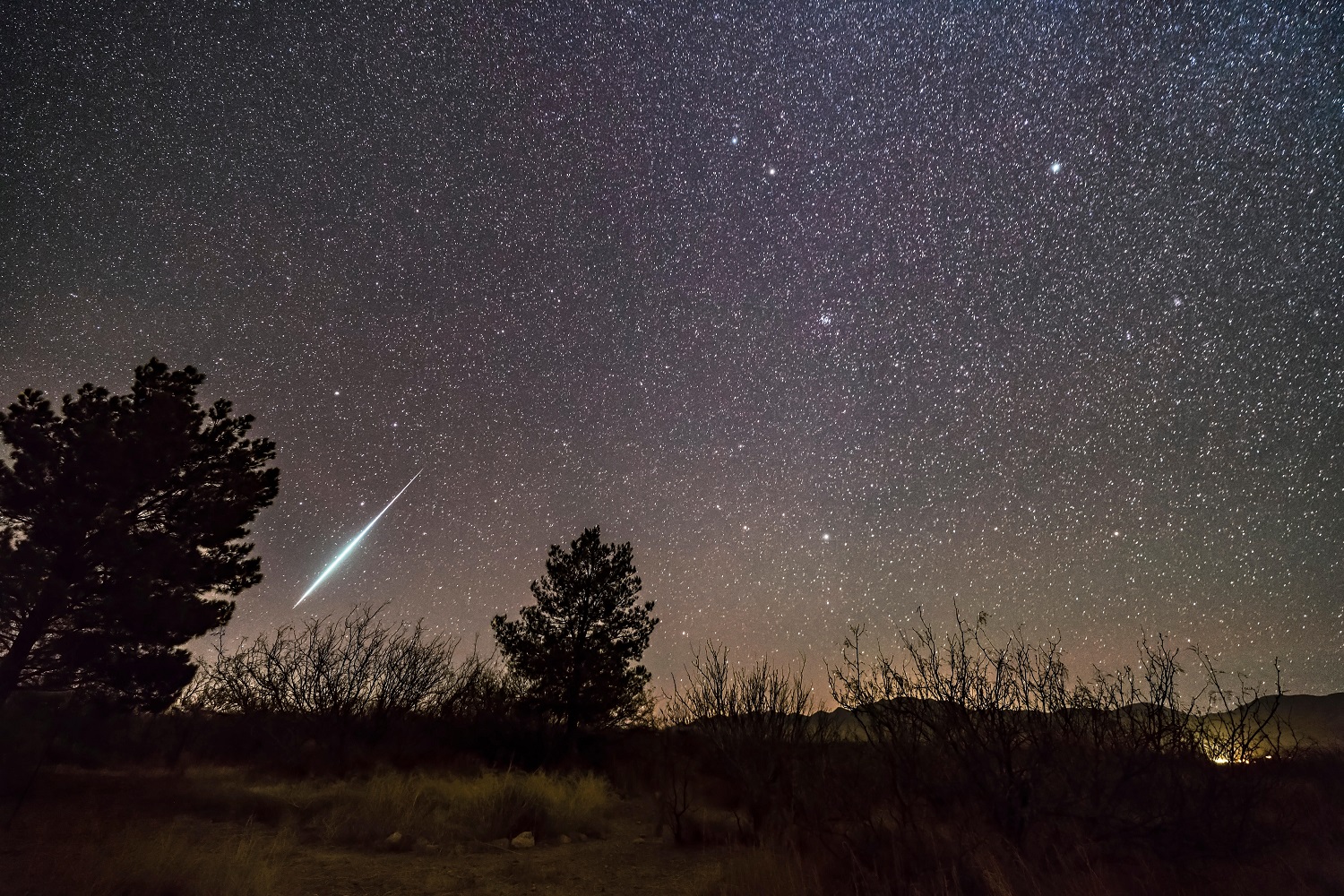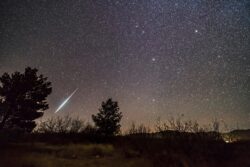Great Balls of Fire
“La Fin du Monde,” the Red (or White) Scare, and the story of the Great Meteor of 1957
Published: August 29, 2022
Last Updated: June 1, 2023

Alan Dyer / VWPics / Alamy Stock Photo
A single bright meteor from the Geminid meteor shower of December 2017, dropping toward the horizon in Ursa Major.
Around 10 p.m., what we now know as the “Great Meteor of 1957” entered the Earth’s atmosphere and crashed somewhere within the Gulf Coast region. In 2008, Dave Hostetter constructed an exhibit at the Lafayette Science Museum, where he was then curator, commemorating the event. He used eyewitness accounts and newspaper clippings to tell the story of the night people of the American South, from north Texas all the way to Alabama, thought the world was ending.
Gracie Babineaux, docent at the Lafayette Science Museum, said meteors create an optical illusion in which they always seem closer than they actually are. An eyewitness from Monroe said everyone thought the meteor landed in their backyard, as reported by the Baton Rouge Morning Advocate the day after the meteor’s impact. Other eyewitness accounts that appeared in newspapers throughout the Deep South, like the New Orleans Time-Picayune, Chattanooga Times Free Press, and Birmingham News, mentioned they felt a sonic boom and saw a white flash whose source seemed to be nearby. Babineaux said the meteor made the dark hours of the night “almost seem like it was daytime again.” The meteor’s entrance into the Earth’s atmosphere slowed it down significantly and caused it to burn up the closer it got to the ground.
Among many eyewitnesses accounts, a common report was the belief that they were witnessing a nuclear attack on the American South. With the Cold War in full effect, to residents on the ground the Great Meteor of 1957 appeared to be a missile heading straight for their backyards. In the Lafayette Daily Advertiser, eyewitnesses said it looked like “an atomic bomb dropped over New Orleans,” “an exploding star,” and “a guided missile gone astray.”
People feared the Soviets were attacking Louisiana to strategically cripple the US economy. Some thought it was an attack on the petroleum industry in Baton Rouge and along the Mississippi River. Others believed it was aimed at New Orleans to decimate the invaluable Port of New Orleans and the chokepoint of the Greater Mississippi River basin.
Space exploration had not yet begun. Sputnik 1 would not launch for another seven months, and Neil Armstrong wouldn’t land on the moon for another twelve years. There was no technology available to detect incoming meteors, and no warning for the populace. A giant luminescent streak hurtling towards the earth understandably incited considerable confusion and fear in those who beheld it.
The Lafayette Science Museum’s exhibit commemorated an astronomical event that is not widely known outside of the Gulf Coast region—because material evidence that it actually happened has never been found. Babineaux explained that, despite the many eyewitness accounts, there are no signs of meteor impact—no crater, no meteorite remnants. Researchers have combed the expanse of Louisiana’s coastal plains in search of the Great Meteor of 1957. They came up empty-handed.
This suggests that the meteor crashed in the Gulf of Mexico. Furthermore, the subtropical climate of the Gulf Coast breaks down the elements of iron and nickel that would have been present in any meteorite fragments that reached land. For this reason, it’s difficult to come by any meteorite samples in Louisiana. With the lack of crater evidence, the Great Meteor is a piece of history that lives on only in memory.
But “just because we don’t have fragments and craters doesn’t mean Louisiana hasn’t been impacted by meteors,” Babineaux explained. “It has happened. And it’s cool that people got to witness it.”
Caden Lim is a senior at Louisiana State University studying journalism with a minor in geography. He is from Colorado and has developed a fascination for Louisiana culture, history, and geography.
